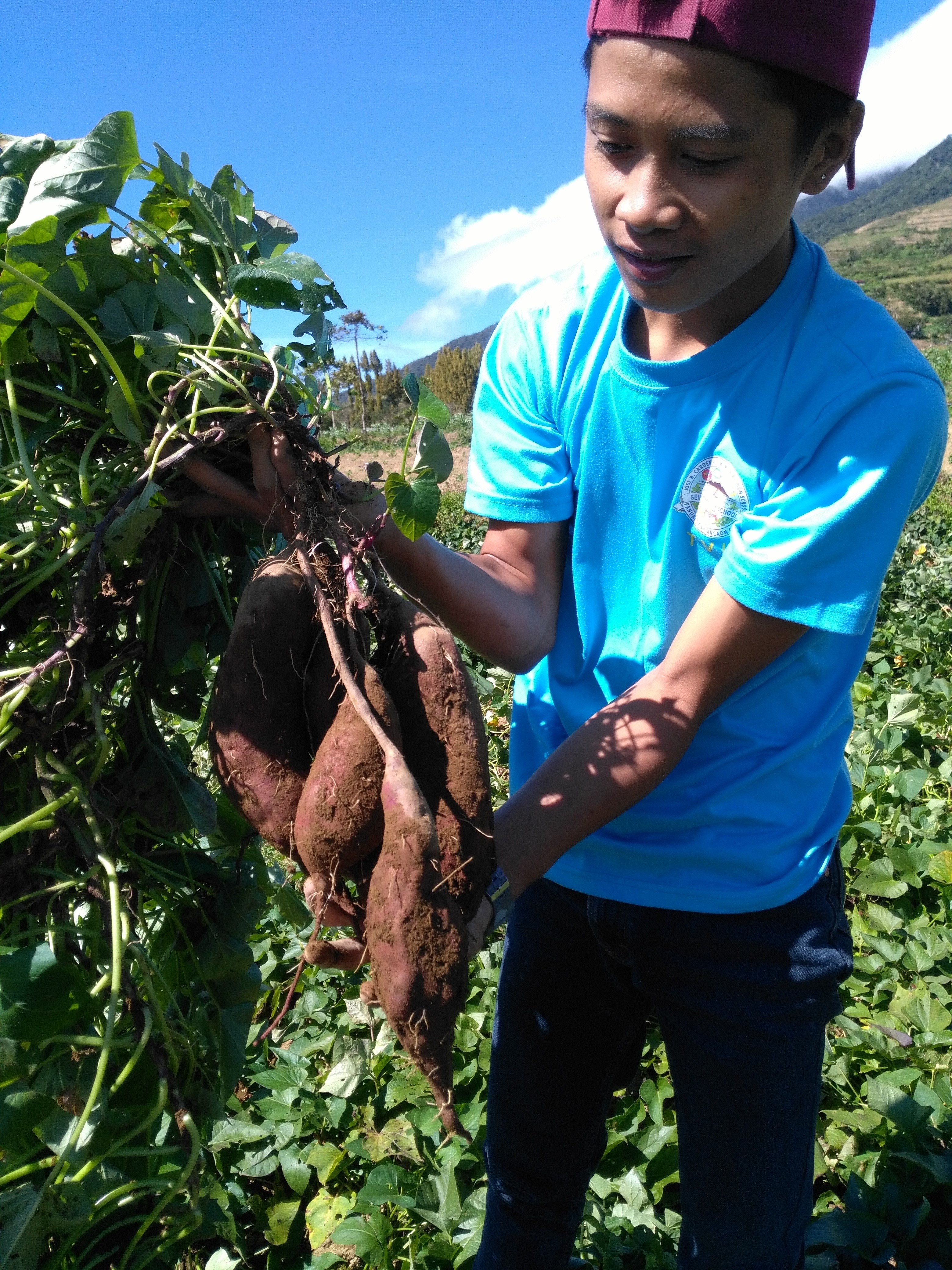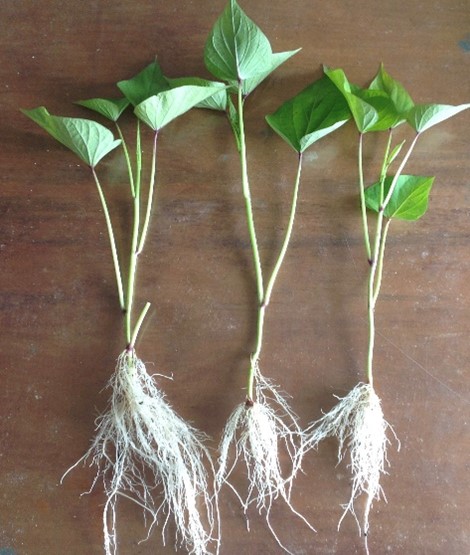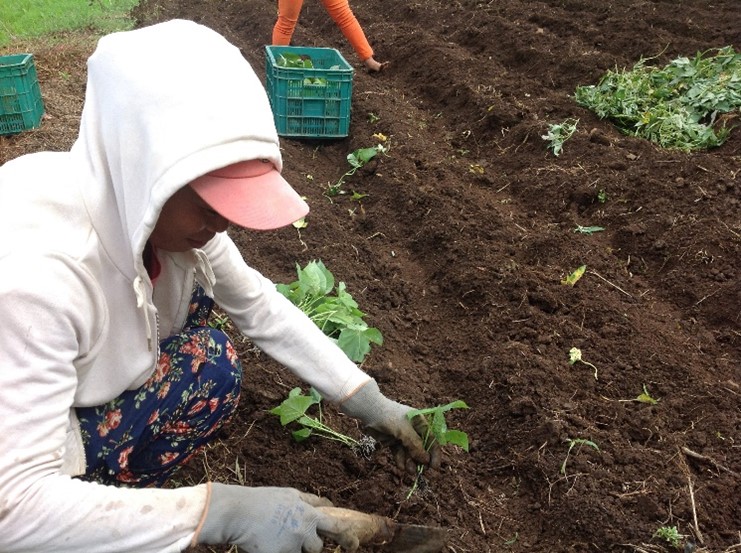
Problem: Inadequate health and nutrition of large segments of the population in Negros and globally still exists today. The 3rd goal of the UN Sustainable Development Goals is: “Ensure healthy lives and promote well-being for all at all ages.” We address this goal via the selection and dissemination of healthy nutritional sweet potato varieties.
Outcomes: Our partner, PSRTC, introduced and selected numerous nutritionally rich varieties of sweet potatoes, which are now spreading rapidly across the whole of the Negros island.
Specific selected sweet potato varieties have numerous health benefits including rich in vitamins, minerals, antioxidants, and fiber. The orange and purple varieties are rich in antioxidants that protect the body from free radical damage and chronic disease. Anthocyanin from purple sweet potatoes was found to slow the growth of certain types of cancer cells and was found to protect the brain by reducing inflammation and preventing free radical damage. Orange fleshed sweet potatoes are a very rich source of Beta-carotene, a plant-based compound that is converted to Vitamin A in the body, which is critical for a healthy immune system and good vision. The fibers (soluble and insoluble) and antioxidants promote gut health.
 five newly introduced popular sweet potato varieties.
five newly introduced popular sweet potato varieties.
In 2013, when we started the farm in Canlaon City, the most popular variety and the only commercial variety being grown by farmers was C1, a white flesh and white skin variety. Farmers complained that over generations of field level vegetative multiplication, yields declined. According to the agriculture technician, now retired, the C1 was introduced in 1985 and had seriously degenerated after 2 decades. Farmers needed clean virus-free vines as planting materials of new varieties that would be socio-economically acceptable by farmers.
To address this need, PSRTC requested in-vitro plants of different clones from the Northern Philippines Root Crops Research and Training Center at Benquet State University. These clones were multiplied in-vitro by nodal cuttings and eventually multiplied rapidly using apical cuttings in the greenhouse. The initial field trials were from rooted single node cuttings. At harvest, field and sensory evaluation were conducted with a group of farmers. Selected clones were multiplied and interested farmers undergo training on sweet potato production. Cuttings of the different clones were given to farmers after the training for their own field trials.
At present, different colored varieties are being commercially grown by farmers in Canlaon City and Guihulngan of Negros Oriental and San Carlos City, Negros Occidental Recently, we visited Dobdob, Valencia, a remote barangay and about 198 km. from Canlaon City. The varieties they were growing are Immitlog and Benia Zuma from Canlaon City and were selections from our trials! Indeed, these varieties were disseminated to far-flung barangays through friends and relatives, and other means.
Some farmers within Kanlaon National park had tried multiplying from cuttings from mother plants taken from PSRTC. These farmers attest to the fact that multiplying sweet potato from cuttings is beneficial in being able to multiply the new varieties quickly in their own farms. A recent example is Mario from Purok Repolyo. He received 8 trays of mother plants on July 3, 2020 and as of September he had already cut apical cuttings three times and planted 2 of his fields. He plans to plant most of his fields with sweet potato as a response to problems brought about by the pandemic. Planting vegetables at this time is too risky as the market and demand is very unstable. Whereas, with sweet potato, he has more control with harvest schedule and the crop has better storability compared to vegetables


rooted apical cuttings and a young farmer transplanting them to her field.
The experience working on the farm and with farmers clearly shows that rapid multiplication techniques using apical cuttings are a viable tool for the evaluation and dissemination of new sweet potato varieties.